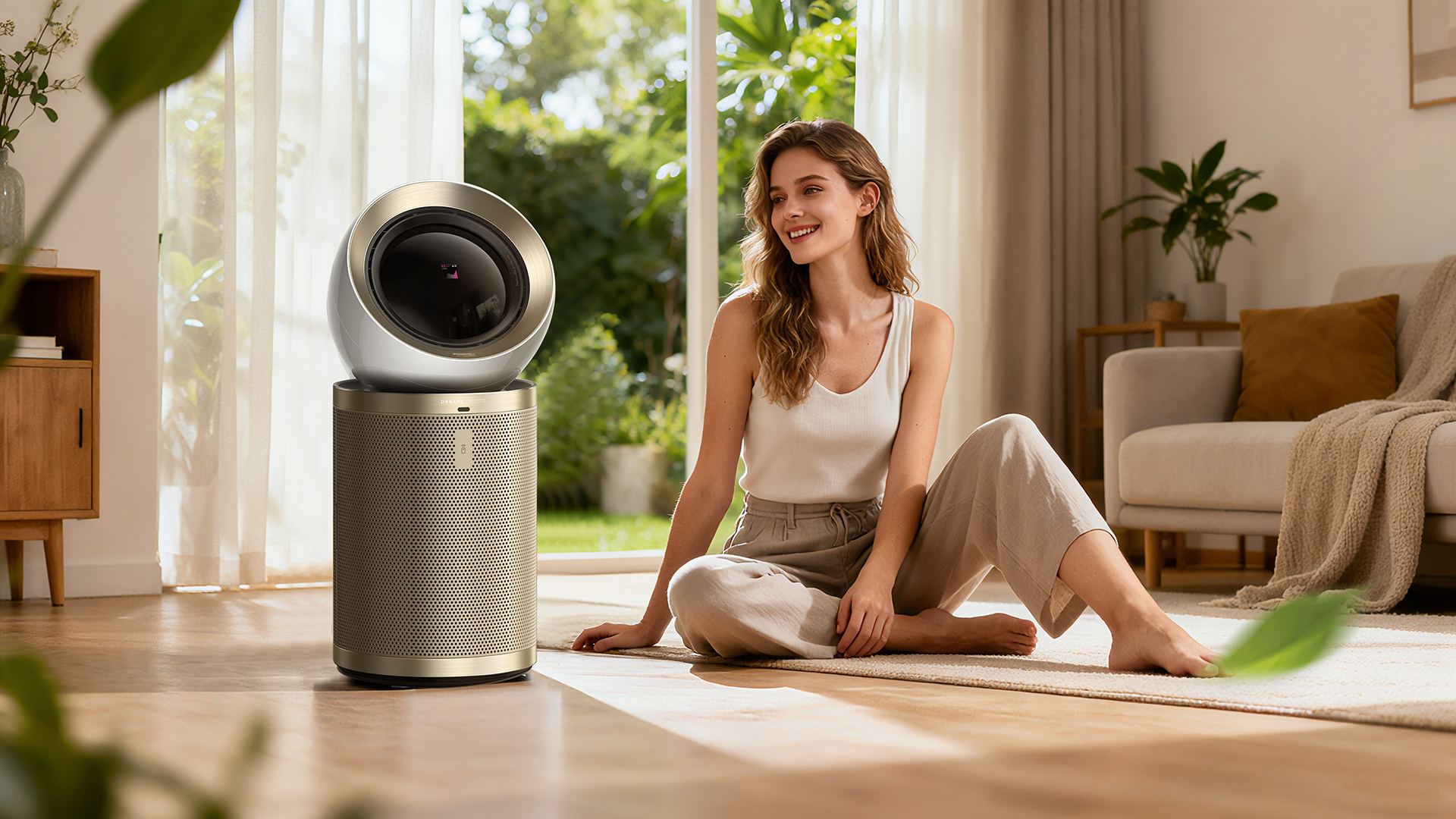
In the world of air purifiers, you must have heard about the term CADR. But what is CADR rating, and how is it measured?
If you live in a wildfire-prone area or have asthma/allergies, understanding CADR helps you size a purifier correctly and avoid underpowered picks. In this guide, we’ll break down what CADR means, how it’s measured, and how to use it to choose the right model for your space.
Table of Contents
- What Is CADR (Clean Air Delivery Rate)?
- How Is CADR Measured?
- What Is a Good CADR Rating?
- Debunking Common CADR Myths
- FAQs about the Clean Air Delivery Rate
- Conclusion
What Is CADR (Clean Air Delivery Rate)?
CADR stands for Clean Air Delivery Rate, a rating of how much-filtered air is produced at maximum fan speed. It is the simplest way to compare how fast an air purifier actually cleans a room. Think of it as the unit’s clean-air speed: the higher the number, the faster levels of smoke, dust, and pollen drop.
CADR is a metric managed by the Association of Home Appliance Manufacturers (AHAM) to measure the indoor performance of home air purifiers. It shows the ability of an air purifier to remove smoke, pollen, and dust particles from a room of a certain size.
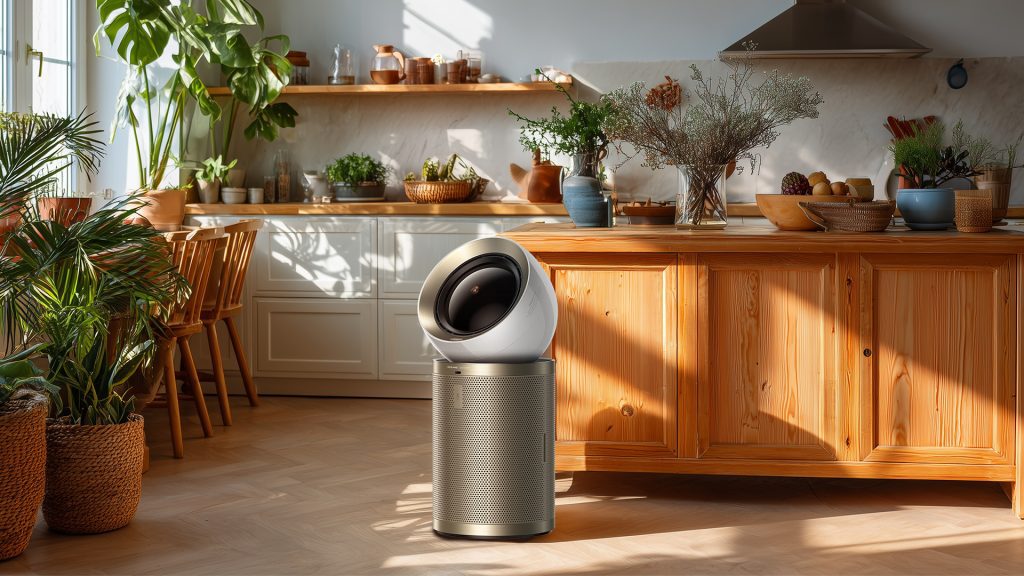
Particle Types & Ratings of CADR
So, CADR tells you how fast a purifier clears the air and how effectively it can filter specific particles.
You can find the AHAM seal on the back of your cleaner’s unit, displaying three CADR numbers for different types of particles. These three particles, ranging from small to medium to large size, are tested to have their own ratings.
The table below shows what each number means:
| Particle Type | Particle Size | CADR Performance Rating | Tip |
| Dust (eg, house dust) | 0.09-1.0 microns | 10-400 | Good for everyday dust control. |
| Smoke(eg. Tobacco, or wildfire smoke) | 0.5-3 microns | 10-450 | Prioritize this if smoke is your main concern. |
| Pollen (eg, seasonal pollen, or allergy-prone individuals) | 5-11 microns | 25-450 | Key for allergy relief. |
Note: The higher the CADR number of the model, the faster it will remove that particle from the air.
It is important to check the local Air Quality Index (AQI) reports to monitor the air quality. The higher AQI is due to higher PM2.5 that can easily penetrate to lungs and bloodstream, leading to health risks. It is roughly the size of dust and smoke.
Understanding the PM2.5 CADR number is important for safer daily living. Suppose your home is highly exposed to smoke or traffic emissions. So an air purifier with a high CADR score for smoke will quickly remove the smoke from the air.
CADR Certification & Standards
The Clean Air Delivery Rate is tested and certified under standardized methods to ensure consistency across products. In the United States, CADR is measured using the AHAM protocol, which places the purifier in a controlled test chamber to evaluate how quickly it reduces dust, pollen, and smoke. Results are verified through the AHAM Verifide® program, so consumers can trust the numbers shown on the label.
In addition to CADR itself, other recognized standards play a role. ENERGY STAR certification highlights models that balance high CADR with energy efficiency and also sets limits on ozone emissions, keeping devices safer for long-term use. Meanwhile, filter classifications such as HEPA grades describe the filter’s efficiency but do not replace CADR testing, since CADR reflects the performance of the entire unit.
Together, these certifications help homeowners compare models with confidence, ensuring not only speed of purification but also energy savings, safe operation, and verified filter performance.
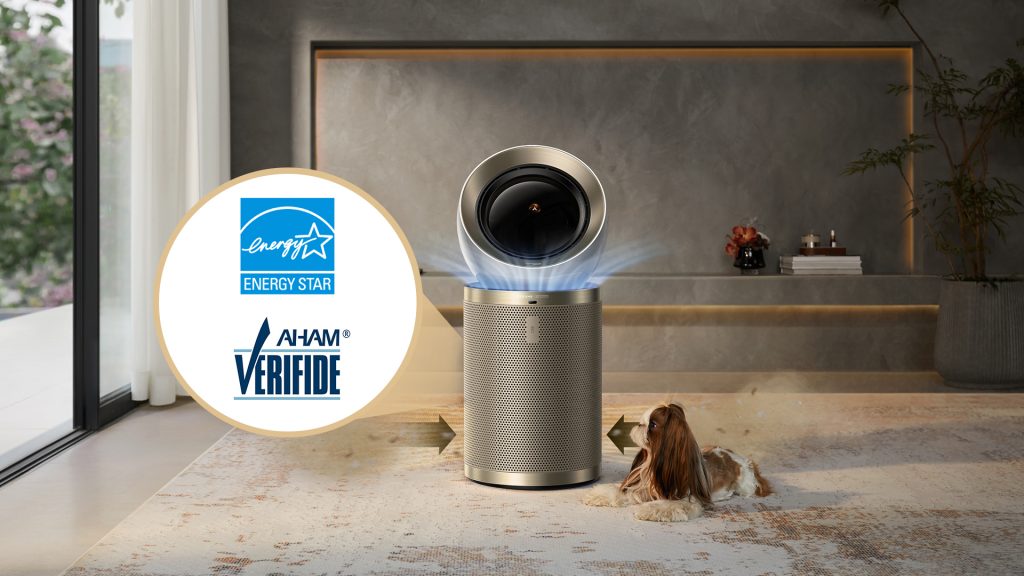
How Is CADR Measured?
In the US, CADR is measured in CFM using standardized chamber tests that track how quickly a purifier reduces these pollutants. But in some regions like Asia, it is measured in cubic meters per hour (m³/h).
To compare the products globally, 1 CFM is approximately equal to 1.7 m³/h.
CFM = m³/h ÷ 1.7
m³/h = CFM × 1.7
For example, 235 CFM ≈ 400 m³/h.
To calculate the CADR number, the AHAM-certified lab testing is done in a controlled chamber of 1008 cubic feet. The CADR score is deduced from the following formula:
CADR = Q × (E – E0)
Where Q is the airflow expressed in cubic feet, E is the pollutant removal efficiency, and E0 is the natural pollutant decay. You don’t have to calculate it as the CADR values are provided by the manufacturer.
In easy terms, CADR indicates the airflow (CFM) times the efficiency of the air filter. The higher the efficiency of the filters and airflow, the higher the maximum CADR ratings. For example, an air filter with 235 CFM and 80% efficiency would result in a CADR of 188.
What Is a Good CADR Rating?
It depends on your room size. According to the 2/3 rule by AHAM, the CADR should be at least 2/3rd of the room area. For example, a 100 CADR air purifier is best for a room size of 150 square feet.
It is believed that open-plan homes require air purifiers with a CADR score of around 300-400 CFM to clean them effectively. But modern air purifiers with compact size can clean air in larger spaces effectively without needing multiple units. One such example is Dreame’s AirPursue PM20 of CADR 235 CFM; it can clean the big spaces up to 1,690 sq ft.
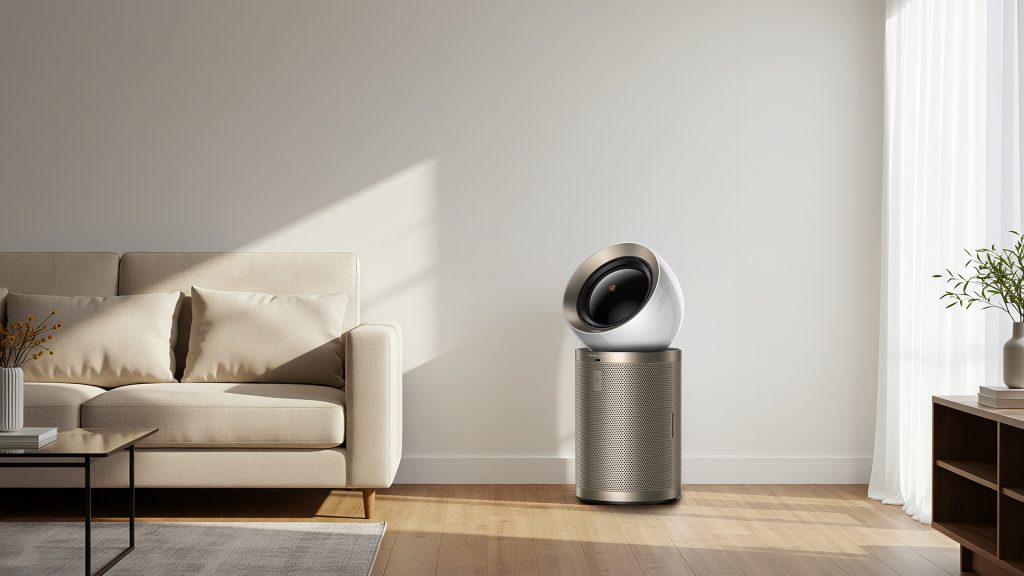
Size Up Your Room for Optimal Air Purification
Here is a step-by-step guide to accurate room sizing for maximum performance.
- Step 1: Find out the room area by measuring the length and width in square feet using a measuring tape.
- Step 2: Multiply this area by the ceiling height to find out the volume in cubic feet.
- Step 3: Use the given formula to find out the ACH according to use.
- ACH = CADR × 60 ÷ Room volume (cubic feet)
- Air Changes per Hour, or ACH, is the number of times the unit filters a room’s air volume in an hour.
- Step 4: Evaluate the needed CADR to remove the pollutants, keeping in view the air exchange per hour.
- Step 5: Lastly, use a decision matrix to choose the best air purifying unit for your house.
Still confused? Let’s consider the example of the Dreame AirPursue PM20 unit. It has a CADR of 235 CFM or 400 m³/h. The ACH for a 1,600 cubic feet room volume (when the room area is 200 sq ft with an 8 ft ceiling) is 8.8. It can achieve 2-5 air exchanges in an hour, making it a good choice for a highly polluted zone.
Beyond CADR — Choosing the Right Air Purifier
For choosing the right unit, we believe that more information is required. You must also look for:
- Type of filter: Filters like HEPA can remove particles of 0.3 microns in size, important for efficient filtration.
- Smart features: Intelligent units having auto modes and sensors help in tracking the performance as well as adjusting the fan speed automatically.
- Energy Efficiency: Having an EnergyStar-certified air purifier will save energy.
- Noise level: Since they are used consistently, choose the unit that is not too loud.
Our Standards of Clean Air
Breathe cleaner air in every corner, not just beside the purifier. CADR is useful—but it only measures how fast particles drop in lab tests, not how evenly clean air spreads at home. At Dreame, we design for Even Purification: powerful airflow, directional guidance, and continuous circulation that push clean air across the entire room. The result is more consistent protection—especially in large spaces, busy areas, and homes with pets.
Want protection beyond CADR? Learn how Even Purification keeps the air in your whole room truly clean.
Debunking Common CADR Myths
Myth 1: Higher CFM = higher CADR.
CADR does not only reflect air flow. It also takes into account the pollutant removal efficiency. Hence, a higher CFM (air flow) does not mean a higher CADR number.
Myth 2: HEPA equals high CADR.
HEPA filtration ensures trapping the dust, smoke, and pollen particles effectively. But it doesn’t assure a high CADR if the directed air flow is not strong.
Myth 3: One standard applies to all spaces (e.g., dorm vs open plan).
The home layouts and higher ceilings (more than 8 ft) also affect the performance. One purifier might not be enough for larger spaces. Also, using an air purifier with a higher CADR in small apartments will waste energy. Thereby, read the manufacturer’s recommendations on room sizing.
Myth 4: CADR alone guarantees health outcomes.
Even if you buy an air purifier with a high CADR, it does not guarantee an improved air quality. You would need to maintain the unit and use it consistently to avoid health risks.
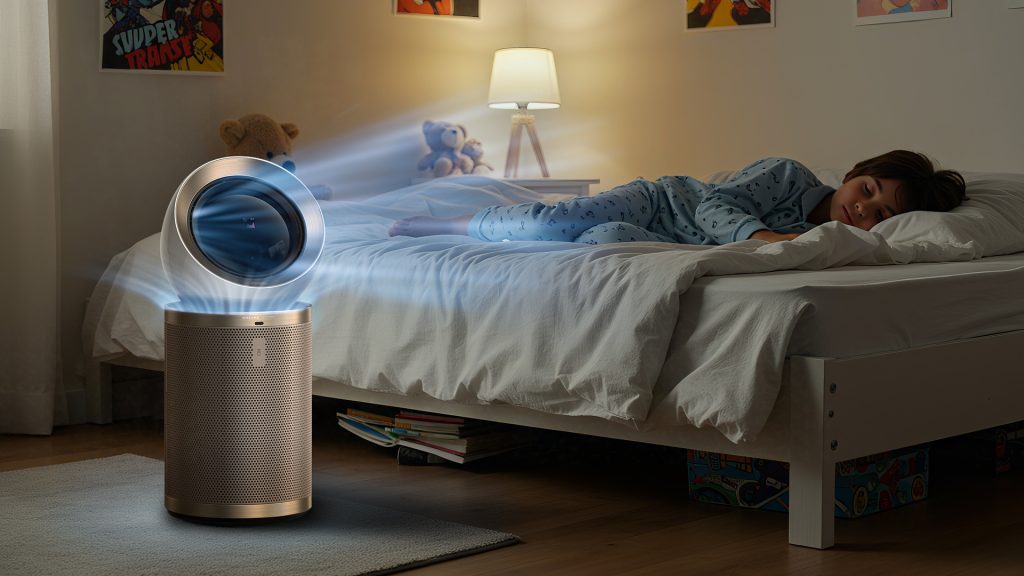
FAQs about the Clean Air Delivery Rate
Q: Do larger purifiers always have higher CADR?
A: Not necessarily. The higher CADR also depends on the quality of the filter and the fan’s performance. Modern compact-sized air purifiers like Dreame ones can generate a higher CADR.
Q: How do I interpret CADR for my room?
A: Follow the AHAM’s 2/3 rule and ACH calculations described earlier.
Q: Can I use multiple units effectively?
A: Yes, placing multiple air purifiers will clean the air better in larger spaces or in higher ceilings.
Conclusion
Even so, CADR is not a standalone factor; it is a critical metric in selecting the right air purifier. Along with CADR, keep in mind the living conditions, room size, and personal needs for optimal performance.
The Dreame AirPursue PM20 exemplifies this balance with its impressive CADR of up to 400 m³/h, swiftly purifying large spaces. Its smart features, including AI-driven auto mode, real-time air quality monitoring, and app controls, make it effortless to maintain pristine air during allergy season or in pet-filled homes, where dander and odors can spike.
For expert air quality tips and ideas on fostering healthier indoor spaces, explore Dreame AirPursue today.